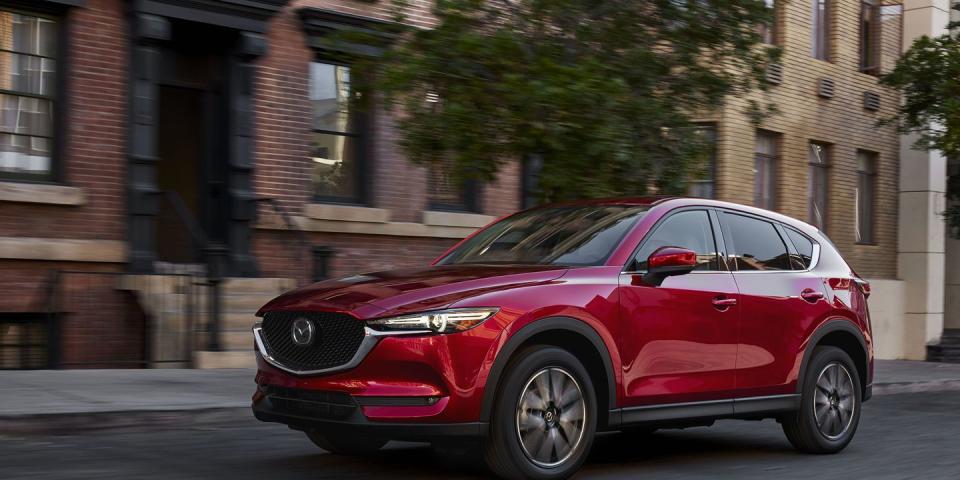2018 Mazda CX-5 Diesel EPA Numbers Are Out, and They’re Not Great

Mazda’s first diesel-powered vehicle in the United States is finally certified, but judging by the bench numbers, it’s no mileage champ.
Mazda has yet to confirm when Americans might actually buy a CX-5 diesel-seriously, we’ve been sweet-talked into thinking this could happen for eight years-and now, we’re wondering if any Americans will. The Environmental Protection Agency published its estimates for a 2018 CX-5 diesel at 28 mpg city and 31 mpg highway for the front-wheel drive version and 27/30 mpg with all-wheel drive. Compared to the gasoline version, city mileage improves by just 3 mpg for both diesels. Highway mileage, normally the reason anyone buys a diesel, improves not at all.
We last heard of the CX-5 diesel after spotting a test car in September. Mazda previously had confirmed that the 2.2-liter turbo-diesel four, which in overseas markets is rated at 173 horsepower and 310 lb-ft of torque, would be available for the 2017 model year. It had also promised a diesel on the 6 sedan and even went so far as to estimate it would reach more than 40 mpg highway on the previous-gen model. With the 2018 model year nearly over, we’re uncertain whether Mazda will proceed or drop the curtain entirely-and Mazda isn’t saying.
Well before the Volkswagen emissions scandal hit, Mazda had been struggling to make its diesel engines meet stringent U.S. tailpipe standards without sacrificing performance. The company told us last year that its Skyactiv-D engine “could be made to drive the way we wanted or it could meet U.S. emissions, but not both.” If Mazda can’t eke out any more efficiency on the highway cycle, it’s clear which path engineers chose. In an effort to reduce nitrogen oxide and particulate matter, we’re betting Mazda had to increase fuel consumption downstream (for example, to keep the particulate filter clean by burning off excess soot), hence the minimal improvement in the EPA ratings.
Making matters worse is that the CX-5 diesel’s direct competitor, the Chevrolet Equinox diesel, matches or betters the CX-5 in the city and trounces it on the highway, at either 39 mpg (front-wheel drive) or 38 mpg. The Jaguar F-Pace 20d (26/33) exceeds the Mazda’s 29-mpg combined rating. Even the much heavier Jeep Grand Cherokee EcoDiesel 4WD (21/28 mpg) and Range Rover Sport Td6 (22/28 mpg) ride perilously close to its highway rating.
With a gallon of diesel currently priced at an average of 28 cents above regular gasoline, we’re not too hopeful for this long-awaited Mazda’s future. Maybe all that torque could give the little ute some trailer-towing cred beyond its 2000-pound rating, but even that is an open question as long as Mazda keeps holding its car close to its vest. It’s hard to make an argument that it’s needed, because, even without the diesel option, the CX-5 is the brand’s best-selling model and won the award for its segment in our 10Best Trucks and SUVs evaluations.
('You Might Also Like',)

 Yahoo Autos
Yahoo Autos 